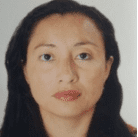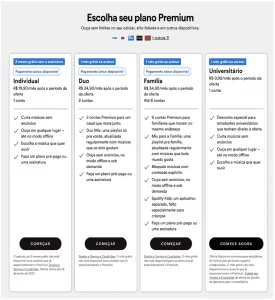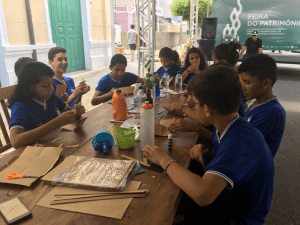ORIGINAL ARTICLE
OLIVEIRA, Hebe Souza de [1], WACHOLZ, Flávio [2]
OLIVEIRA, Hebe Souza de. WACHOLZ, Flavio. Art and the Environment: Brazilian water resources from the NAIF perspective. Revista Científica Multidisciplinar Núcleo do Conhecimento. Year 05, Ed. 06, Vol. 12, pp. 37-60. June 2020. ISSN: 2448-0959, Access link: https://www.nucleodoconhecimento.com.br/art/art-and-the-environment, DOI: 10.32749/nucleodoconhecimento.com.br/art/art-and-the-environment
ABSTRACT
Brazil is a privileged country in terms of the amount of water available in its territory. The way water is represented in the paintings highlights the artist’s perception of this natural resource. The objective of this work was to emphasize the importance of Brazilian water resources and to promote naive art. Regarding the methodological procedures, a documentary research was carried out, based on the catalogs of the exhibitions: Bienal Naifs do Brasil at SESC in Piracicaba/SP (1996 to 2018); International Biennial of Naif Art Totem Cor-Ação – BINAIF de Socorro/SP (2017 and 2019); and the National Exhibition of Naive Art in the State of São Paulo (2019). The study was descriptive, with a qualitative analysis of the paintings and their relationships with water resources, in turn, the water resources painted in the works were presented in a technical way. Fifteen works were selected for their relevance to the theme. The set of paintings analyzed includes the multiple uses of water, in addition to geographic, historical, cultural aspects and different biomes of the hydrographic basins. Problems such as flooding, scarcity and pollution of water resources were also observed. The research made a trip through Brazil, from north to south, dealing with both continental waters and oceanic waters that bathe the coast of the country. In view of this, it is concluded that water is an indispensable natural resource, valuing it through naive art also encourages its preservation and thus contributes to the management of water resources.
Keywords: Environment, water resources, naive art.
1. INTRODUCTION
Water is an essential natural resource, it is synonymous with life. Brazil is a privileged country with regard to the amount of water available in its territory, although there are places with abundance and others with scarcity (TUNDISI, 2014). It is precisely when water is lacking that many people realize that it is not possible to live without water. Therefore, water is indispensable and precious. But, unfortunately, it has been suffering from aggression such as pollution and waste (ANA, 2012). It is necessary to value water and at this point, art can be an important reflective tool. Art has been part of humanity’s culture since the dawn of caves. The way water is represented in the paintings highlights the artist’s perception of this natural resource. In this context, naive art is interesting because the artist is free to create and express himself, without having to worry about aesthetic standards (FINKELSTEIN, 2001). Therefore, the objective of this work was to emphasize the importance of Brazilian water resources and to promote naive art. The documentary research was based on the catalogs of important exhibitions of naive art held in the country in the last 23 years. Regarding the methodological procedures, qualitative analysis of the paintings were carried out, in turn, the water resources painted in the works were presented in a technical way. Therefore, it is a research that involves environmental sciences and arts.
1.1 THE HISTORY OF NAIF ART
According to the Itaú Cultural Encyclopedia (2020), the history of naive art is linked to the paintings by Henri Rousseau, exhibited at the Salon des Indépendents (Hall of the Independents), held in 1886, in Paris. The word naif comes from the French language and means naive, being the expression used to designate the painter’s art. Although Rousseau was initially heavily criticized, he ended up becoming a major influence on avant-garde painters of the time (FINKELSTEIN, 2001). Henri Rousseau was the most prominent name in naive art, but he was not the only representative. According to the Itaú Cultural Encyclopedia (2020), naive art was not something isolated and that it only occurred in France, on the contrary, many other artists emerged around the world, such as Alfred Wallis (England) and Anna Mary Robertson (United States). Having no typical aesthetic characteristics, what makes an art naive is the artist, since it is an individual art and each artist has a unique and genuine style. Many naive artists are self-taught, but there are naive artists who have artistic training (FINKELSTEIN, 2001). According to D’Ambrosio (2013), the naive artist does not follow fads, but develops a personal style and not an imitation. There are museums specializing in naive art all over the world, such as in Germany, Belgium, Canada, Croatia, France, Portugal and Russia. In Brazil, the Museu do Sol in Penápolis/SP, the Museu de Arte Naif de Guarabira/PB and the Museu Internacional de Arte Naif do Brasil (MIAN) in Rio de Janeiro/RJ, founded by the French-born Lucien Finkelstein, stand out. (1931-2008). In addition to museums, there are also specialized galleries, such as the Jacques Ardies Gallery, in São Paulo/SP. Naif art also has major events, such as the Art Naif Festiwal (Naif Art Festival) that takes place in Poland annually, with the participation of artists from several countries.
1.2 NAIF ART IN BRAZIL
At the beginning of the 20th century there were many artistic avant-gardes, and each avant-garde had specific aesthetic characteristics, such as Cubism, for example. In the case of naive art, it is different because it is not something planned by a group of artists or intellectuals, and therefore does not have common or specific aesthetic characteristics (FINKELSTEIN, 2001). In Brazil, one of the most internationally renowned naive artists was Chico da Silva (1910–1985) from Acre. He even received an honorable mention at the 33rd Venice Biennale, in Italy, in 1966. Another great highlight was the carioca Heitor dos Prazeres (1898–1966), who participated in the first São Paulo International Biennial, where he won one of the prizes (ARDIES , 1998). The most traditional and important exhibition of Brazilian naive art is the Bienal Naifs do Brasil, held by the Serviço Social do Comércio – SESC de Piracicaba, selecting participants through public notice, being the most disputed selection in Brazil. Demand is high for naive art events, which has spurred the creation of more events recently, such as: the International Biennial of Naive Art Totem Cor-Ação – BINAIF de Socorro/SP; the National Exhibition of Naive Art in the State of São Paulo; the International Festival of Naive Art – FIAN in Guarabira/PB; the Exhibition Naif Small Formats in Paraty/RJ; the National Exhibition of Naive Artists from the Midwest – ENANCO in Goiânia/GO; and the International Exhibition of Naive Art “Universo da Alma Ingênua” in Santa Teresa/ES. Therefore, in Brazil, naive art is expanding, the number of artists grows every year and the demand gives rise to more offers for events, in addition to the interest of collectors and galleries.
1.3 BRAZILIAN WATER RESOURCES
Brazil has approximately 12% of the fresh water available worldwide, but water availability throughout the Brazilian territory is irregular, in some places there is water in abundance and in others there is a scarcity of water (ANA, 2012). In Brazil, three hydrographic basins play an important role in terms of availability of water resources, strategic water reserves and regional and national economy: the Amazon Basin; the River Plate Basin; and the São Francisco River Basin (TUNDISI, 2014). Regarding oceanic waters, according to the Atlas released by the SOS Mata Atlântica Foundation and the National Institute for Space Research – INPE (2018), the Coastal Zone of Brazil is a territorial unit that extends in its terrestrial portion for more than 10,800 km. , being bathed by the Atlantic Ocean. Thus, Brazil is the second largest country in coastal extension in Latin America. In the face of so much water wealth, in 1997, Law 9,433 was approved in Brazil, known as the Water Law, which established the National Policy on Water Resources. One of its guidelines is to guarantee the multiple uses of water, so that all user sectors have equal access to water resources. Examples of multiple uses of water are: public supply, agriculture, industry, energy generation, navigation, fishing, tourism, recreation, among others. The exception to this rule is related to scarcity situations, when the priority use of water becomes human consumption and animal watering (Law 9433/1997, Art 1, III and IV).
2. MATERIAL AND METHODS
This study analyzed water resources in Brazil painted by Brazilian naive artists. Documentary research, based on the catalogs of the following exhibitions: Bienal Naifs do Brasil at SESC in Piracicaba/SP (1996 to 2018); International Biennial of Naif Art Totem Cor-Ação – BINAIF de Socorro/SP (2017 and 2019) and the National Exhibition of Naive Art in the State of São Paulo (2019). In total, there are 15 catalogs, being the printed Bienal catalogs and the virtual National Exhibition catalog, with approximately 2,400 works and around 1,200 artists. Fifteen works were selected, in which related aspects were addressed: the Amazon Basin; the São Francisco Basin; the La Plata Basin; the Brazilian coast bathed by the Atlantic Ocean; the scarcity of water resources; pollution of water resources; the floods; and multiple uses of water (human and animal consumption, fishing, navigation, agriculture, tourism and recreation). In the selected works, geographical, historical and cultural issues were also observed, in addition to the different biomes. The study was descriptive, with a qualitative analysis of the paintings and their relationships with Brazilian water resources. In turn, the water resources painted in the works were presented in a technical way.
3. RESULTS AND DISCUSSION
Analyzing the painting, Figure 1, it is possible to geographically locate the scene in the Northern Region of the country. The artist paid tribute to the State of Pará. In the foreground you can see people dancing carimbó (typical dance), in the background a historic building in Belém, the Ver-o-Peso market. The city is bathed by the Guamá River and the Guajará Bay, both of muddy color and belonging to the Amazon Basin.
Figure 1: The muddy waters that bathe Belém/PA.
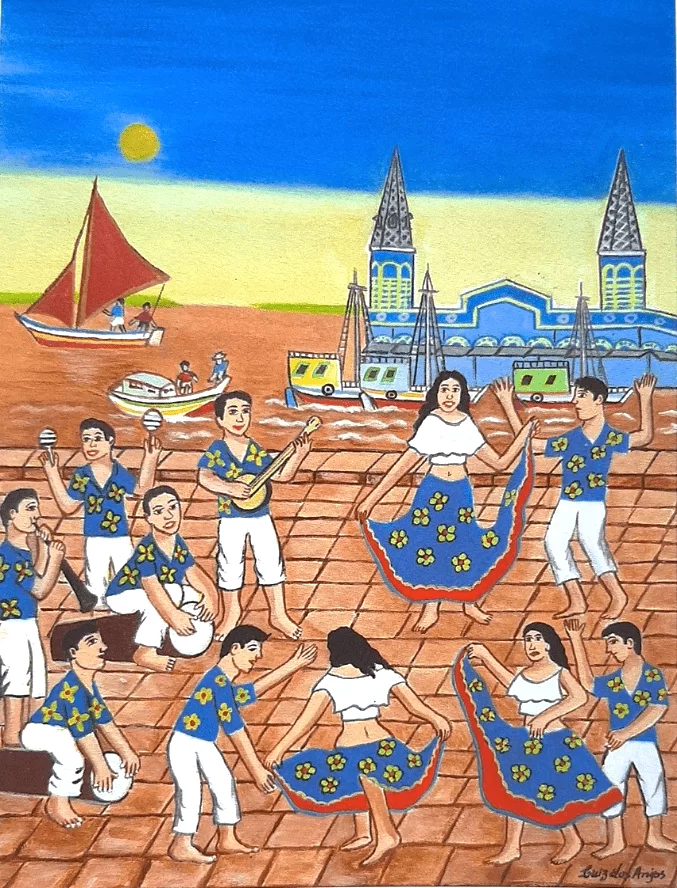
The Amazon Basin is the largest river basin in the world in terms of extension and volume of water, its area is about 7 million km2, and the flow of the Amazon River is around 220,000 m3/s (TUNDISI, 2014). The Amazon Basin occupies, in Brazil, an area of approximately 4 million km2, which is equivalent to about 45% of the national territory (ANA, 2012).
Analyzing Figure 2, it is possible to observe the meeting of the black waters of the Negro River with the yellow-muddy waters of the Solimões River, near Manaus/AM. Note also, a typical boat of the region. Rivers are the main means of access in the region, they work as waterways, carrying and bringing people and goods. The rivers were arranged in two right triangles. The color palette highlighted the meeting of the rivers.
Figure 2: The meeting of the waters of the Negro River with the waters of the Solimões River.
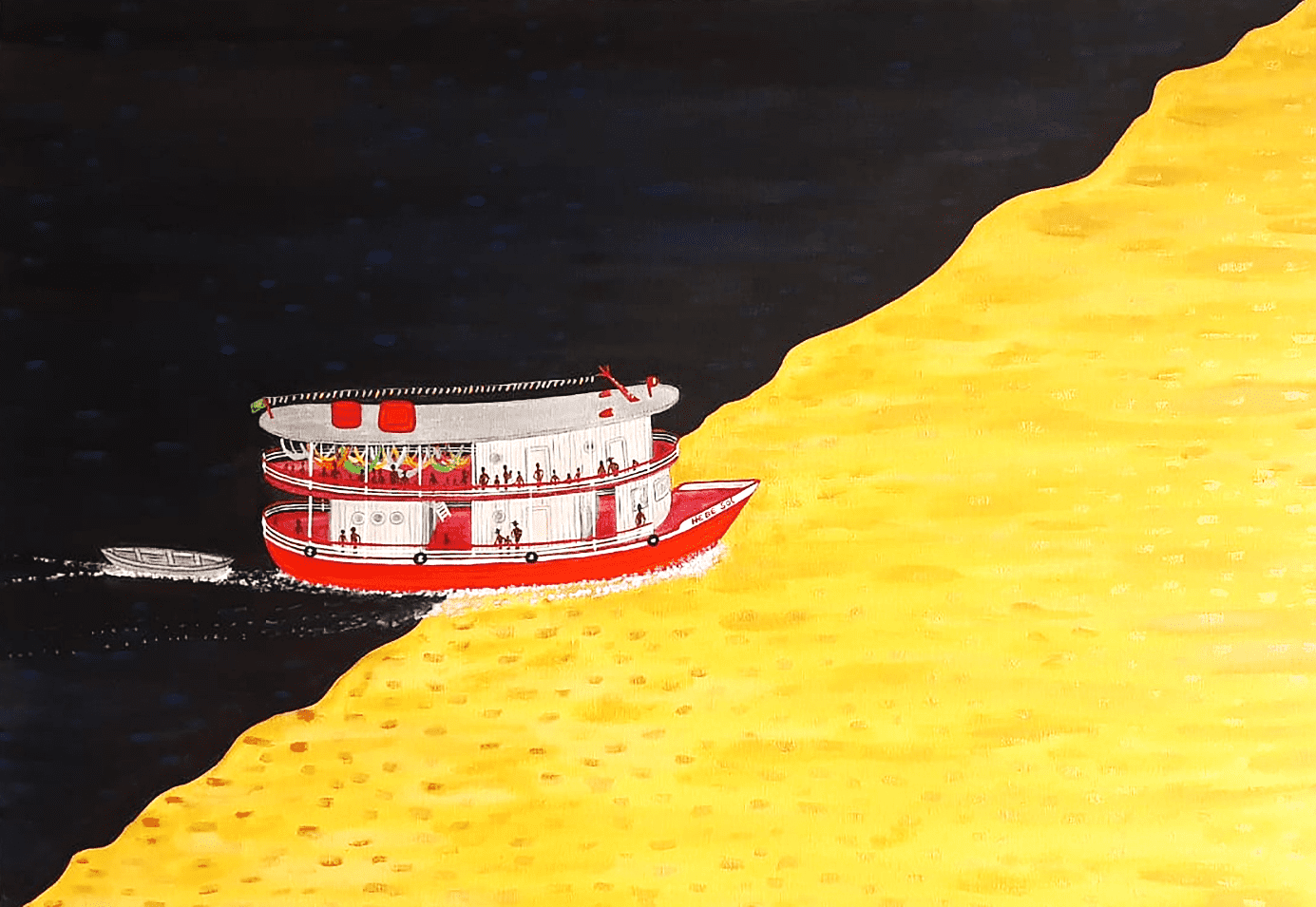
The Solimões River (white water) and the Negro River (black water) belong to the Amazon River Basin. Muddy water rivers (white water) have high turbidity, are rich in nutrients, dissolved ions and sediments, and have a more basic pH. These characteristics are due to erosion and, among other factors, the strong slope of the headwaters of these rivers located in the Andean portion. Blackwater rivers have a dark color due to the presence of dissolved organic substances, have acidic pH, low sediment load and low concentration of calcium and magnesium. The chemical properties of these black waters are determined by the sandy soils and by the characteristic campinarana (vegetation) that occurs at the sources of rivers (ANA, 2012). The meeting of the waters of the Solimões River (yellow-muddy waters) and the Negro River (black waters) is one of the tourist attractions in Manaus, capital of the Amazon. The two rivers do not mix for kilometers, the reasons involve geological issues, in addition to different speeds, volume, densities, temperatures and acidity. After mixing the waters of the Negro and Solimões rivers, the river is renamed the Amazon River (FRANZINELLI, 2011).
Analyzing Figure 3, we can see a group of washerwomen, a craft that is a tradition of Velho Chico (São Francisco River). In the image can also be seen children playing in the river, canoes and people fishing. The painting makes a cultural reference linked to the river, but geographically it is a fictitious place. The colors used are saturated and the paintwork is cheerful.
Figure 3: Washing clothes in the waters of Velho Chico.
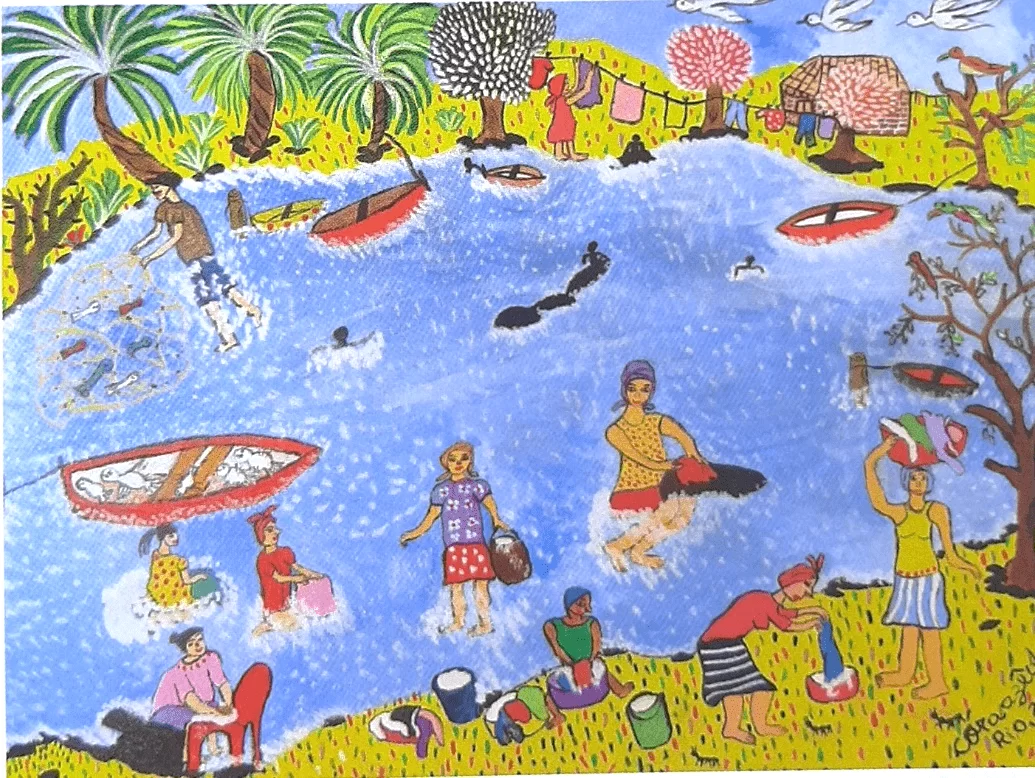
The São Francisco Basin’s drainage area encompasses several biomes, such as the Atlantic Forest, the Cerrado and the Caatinga. The São Francisco River rises in the Serra da Canastra in the municipality of São Roque de Minas in the State of Minas Gerais, crosses the states of Bahia and Pernambuco and forms the border between the States of Sergipe and Alagoas. The São Francisco River is the most important in the Northeast Region, covering a total of 2,796 km until it flows into the Atlantic Ocean (ANA, 2012).
In Figure 4, the site was geographically located by the name of the work “Nordeste” and by the aspect of a semi-arid region. You can see the ground so dry from the lack of rain that it’s all cracked. The dry trees, only the cacti should still have a water reserve. On the floor, bones of dead animals. People must be hungry, they are eager to pick up supplies that arrived on the plane that landed there. The lizard is a pet of the woman next to a flag, perhaps of Padre Cícero (venerated as a saint in the northeast). You can still see a woman with a pitcher on her head, probably to put the precious water. The painting has a gloomy aspect, reminiscent of sadness related to the drought in the Northeast Region.
Figure 4: Water scarcity.
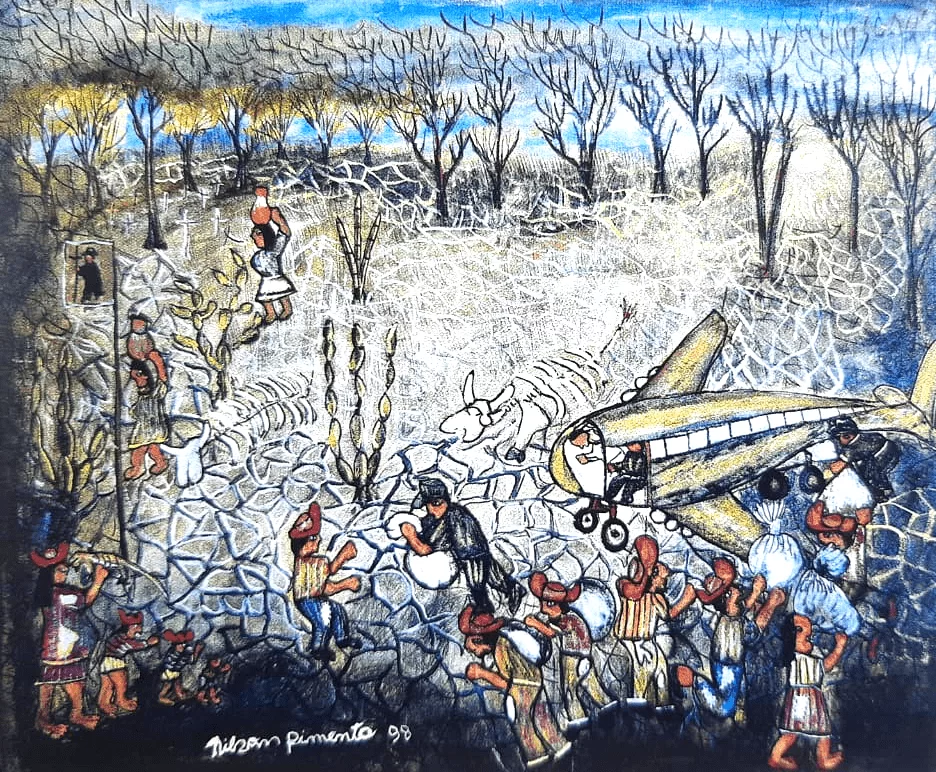
The climate of this semi-arid region has average annual rainfall of 250 to 500 mm and has vegetation adapted to water scarcity, such as the caatinga (TUNDISI, 2014). Drought is “the prolonged period of low or absence of rainfall. If it occurs for a very long period of time and affects water users in the region in a generalized way, it constitutes a drought” (ANA, 2013, p. 9). Drought episodes in the Northeast region have been reported since the 16th century, being recurrent in the region. However, it does not affect the entire Northeast, the drought is concentrated in an area known as Polígono das Secas, which involves the semi-arid regions of part of eight northeastern states: Alagoas, Bahia, Ceará, Paraíba, Pernambuco, Piauí, Rio Grande do Norte and Sergipe. . In addition, it also covers part of northern Minas Gerais (MARENGO; CUNHA; ALVES, 2016). In regions where there is a lack of water, there are low levels of supplies in relation to the minimum necessary for the basic necessities of life. The scarcity of water resources generates instability in agriculture, in the supply of drinking water, in basic sanitation and in public health. This is reflected in the intensification of social imbalance (TUNDISI, 2014).
Analyzing Figure 5, one can observe a rafting adventure practice on the Peixe River. This recreation practice attracts tourists to the interior of the State of São Paulo, contributing to the economic development of cities in São Paulo, such as the city of Socorro, where BINAIF is also held.
Figure 5: Water for recreation and tourism
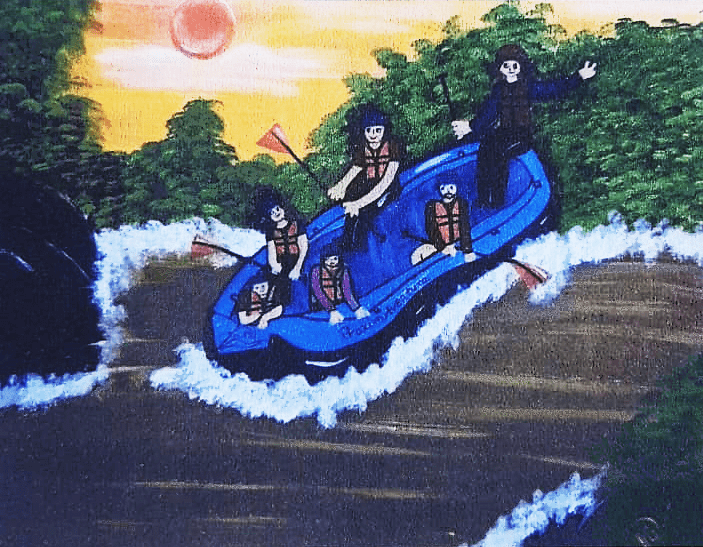
The Peixe River is born in the municipality of Garça in the State of São Paulo, the river flows towards the west of the state and flows into the Paraná River (SIGRH, 2020). In turn, the Paraná River, with 4,880 km in length, is the main source of the La Plata Basin, the second largest basin in Brazil, and where most of the country’s electricity production is concentrated (ITAIPU, 2020).
Analyzing Figure 6, one can observe in the foreground, fishermen, a boat with the name of the Pantanal River, geographically locating where the painted action occurs. One can also observe the small ripples of the greenish waters. In the background, you can see a typical bird, the Tuiuiú (Jabiru mycteria), close to the vegetation, which represents the grasses of the flooded plains.
Figure 6: Fishing in a river in the Pantanal
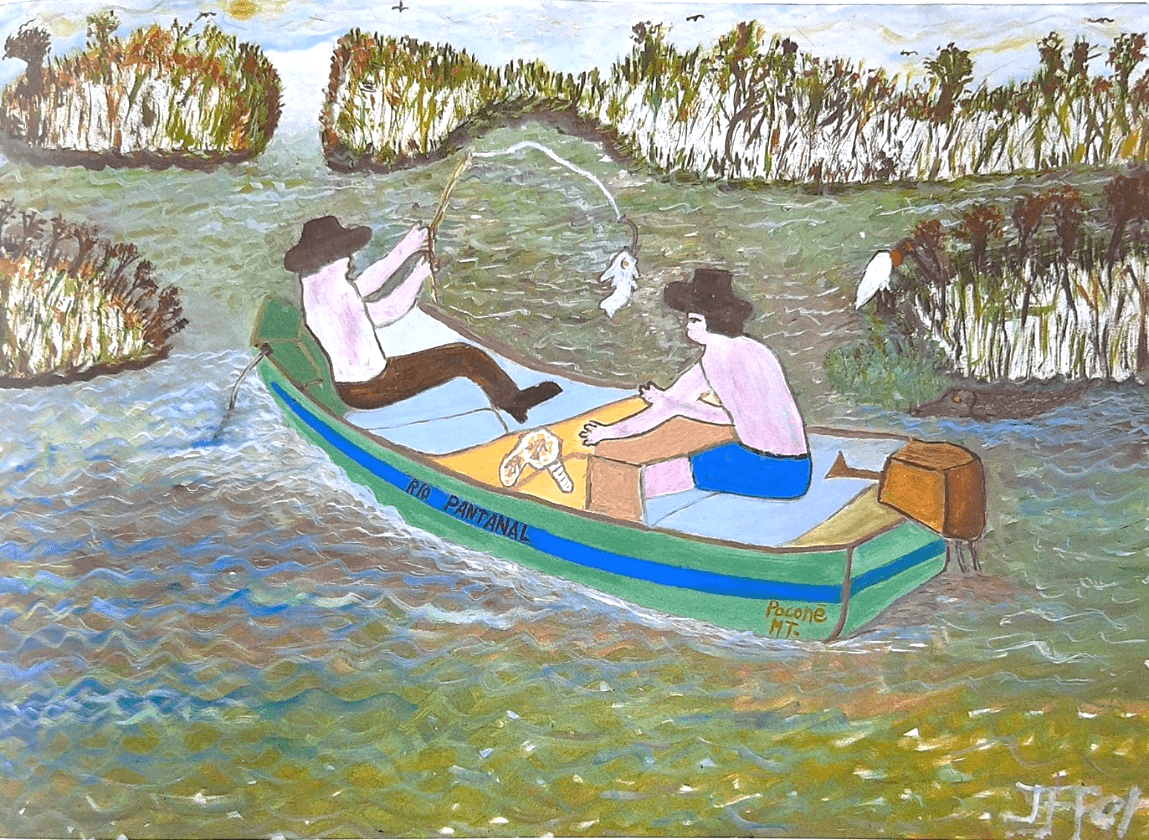
The Pantanal is considered one of the largest continuous wetlands on the planet. Its approximate area corresponds to about 1.76% of the Brazilian territory, occupying part of the states of Mato Grosso and Mato Grosso do Sul, in the Center-West Region. The biome, which is an alluvial plain – geological formations that are characterized by being flat or very slightly inclined – is influenced by rivers that drain the Upper Paraguay river basin (MMA, 2020).
Figure 7 was selected because it shows some of the biodiversity of Brazilian rivers. Analyzing the painting, an indigenous person is seen clinging to a fish, at the same time, he is grabbed by a snake.
Figure 7: Biodiversity of Brazilian rivers.
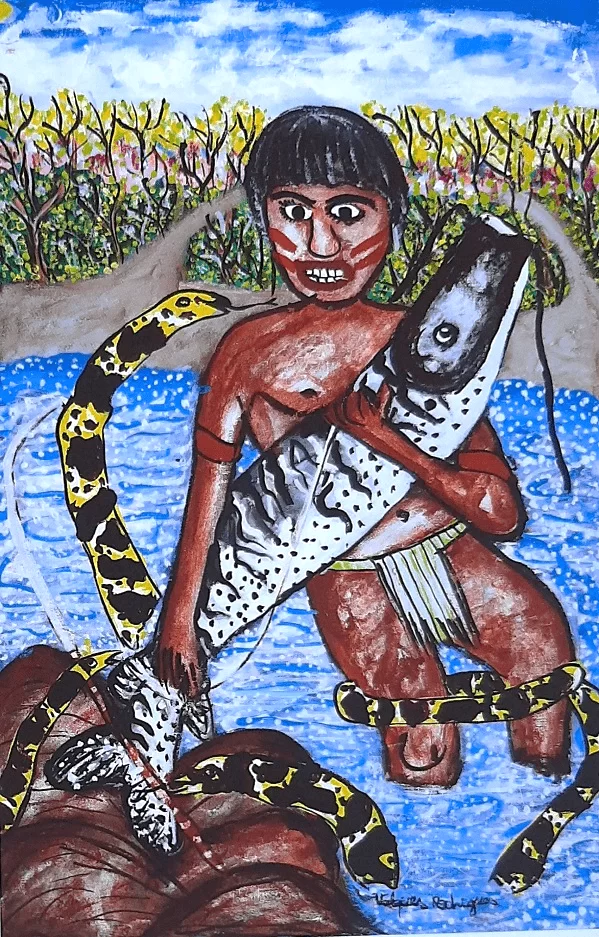
The fish is a catfish, a surubim-cachara (Pseudoplatystoma fasciatum) found in the Amazon, Araguaia-Tocantins and Prata River Basins (AMBIENTE BRASIL, 2020). The snake resembles a yellow anaconda (Eunectes notaeus), a species that occurs in areas that flood annually, influenced by the floods of the Paraguay River, in regions close to the borders between Brazil, Bolivia, Paraguay and Argentina (O ECO, 2020).
Analyzing Figure 8, the painting beach is geographically located by the name of the work: Jurerê. The beach is located north of Florianópolis Island, in the State of Santa Catarina, Southern Region of Brazil. The work shows the crowded beach, with people having fun in the sand and in the sea. There are also street vendors, stalls and a lifeguard station. The painting is very cheerful, a holiday setting.
Figure 8: Atlantic Ocean bathing a Brazilian beach in the South Region.
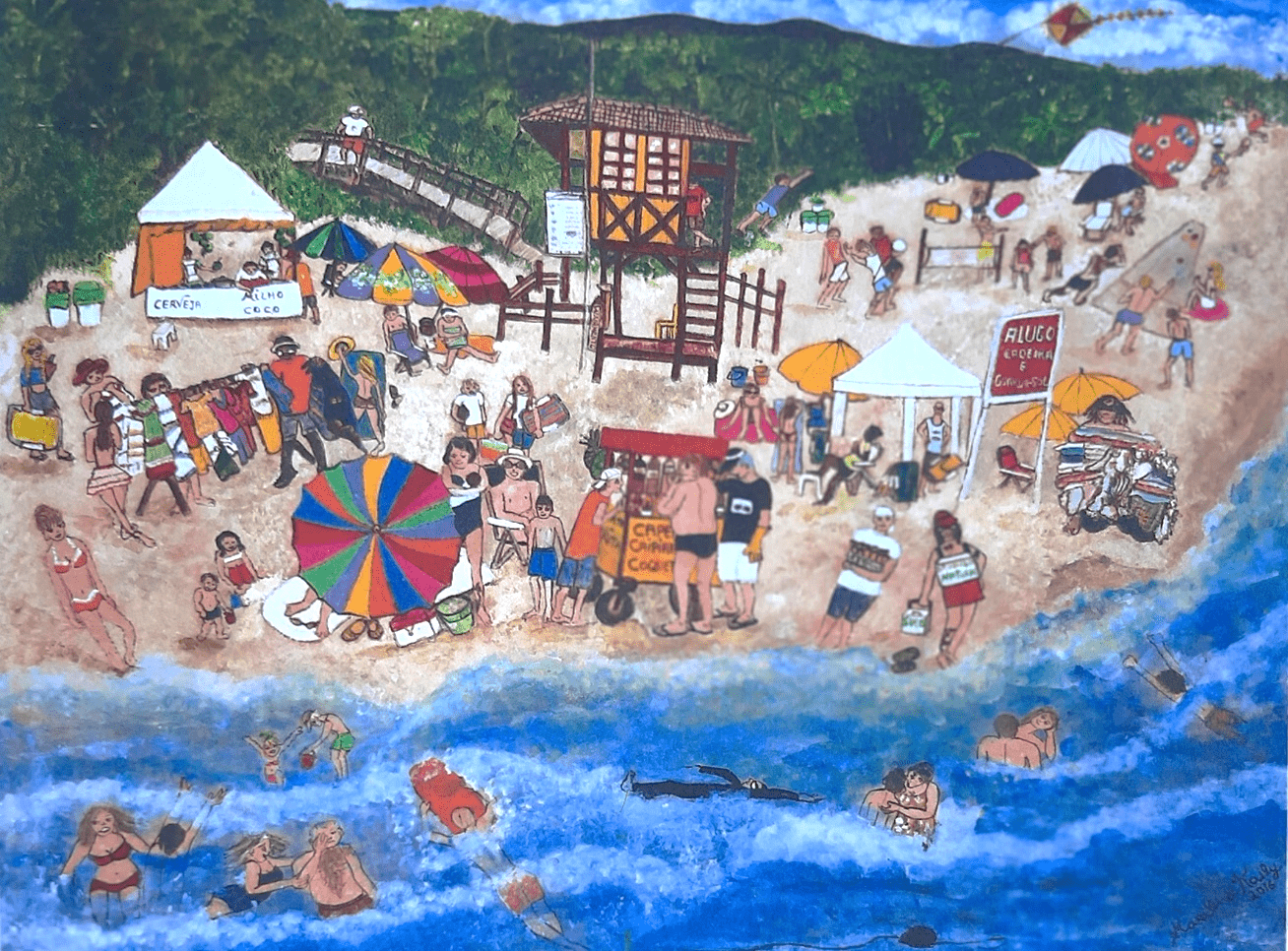
Brazil has one of the longest coastlines in the world, with beautiful beaches bathed by the Atlantic Ocean. According to the Atlas released by the SOS Mata Atlântica Foundation and the National Institute for Space Research – INPE (2018), Brazil concentrates around two-thirds of the country’s population and 75% of the main urban centers in the coastal region.
Analyzing Figure 9, geographically it is Ipanema Beach and in the background it appears to be the Cagarras Islands. Therefore, the artist painted a beach located in the city of Rio de Janeiro, capital of the state with the same name, in the Southeast Region. On the beach, there are people and tents. The sea is full of little boats. The concept of the work is a criticism: the shadows cast on the strip of sand by the buildings close to the beach. The landscape suggests it to be a warm climate. The artist used a palette of saturated colors. The spatial distribution of the painting is very interesting, as the artist divided the canvas into 3 horizontal bands: one for the yellow-muddy sand; another for the cobalt blue sea; and one for the sky in a lighter shade of blue. The two blue bands, one darker than the other, create a gradient impression. The painting has an aspect of rational and detailed elaboration.
Figure 9: Atlantic Ocean bathing a Brazilian beach in the Southeast Region.
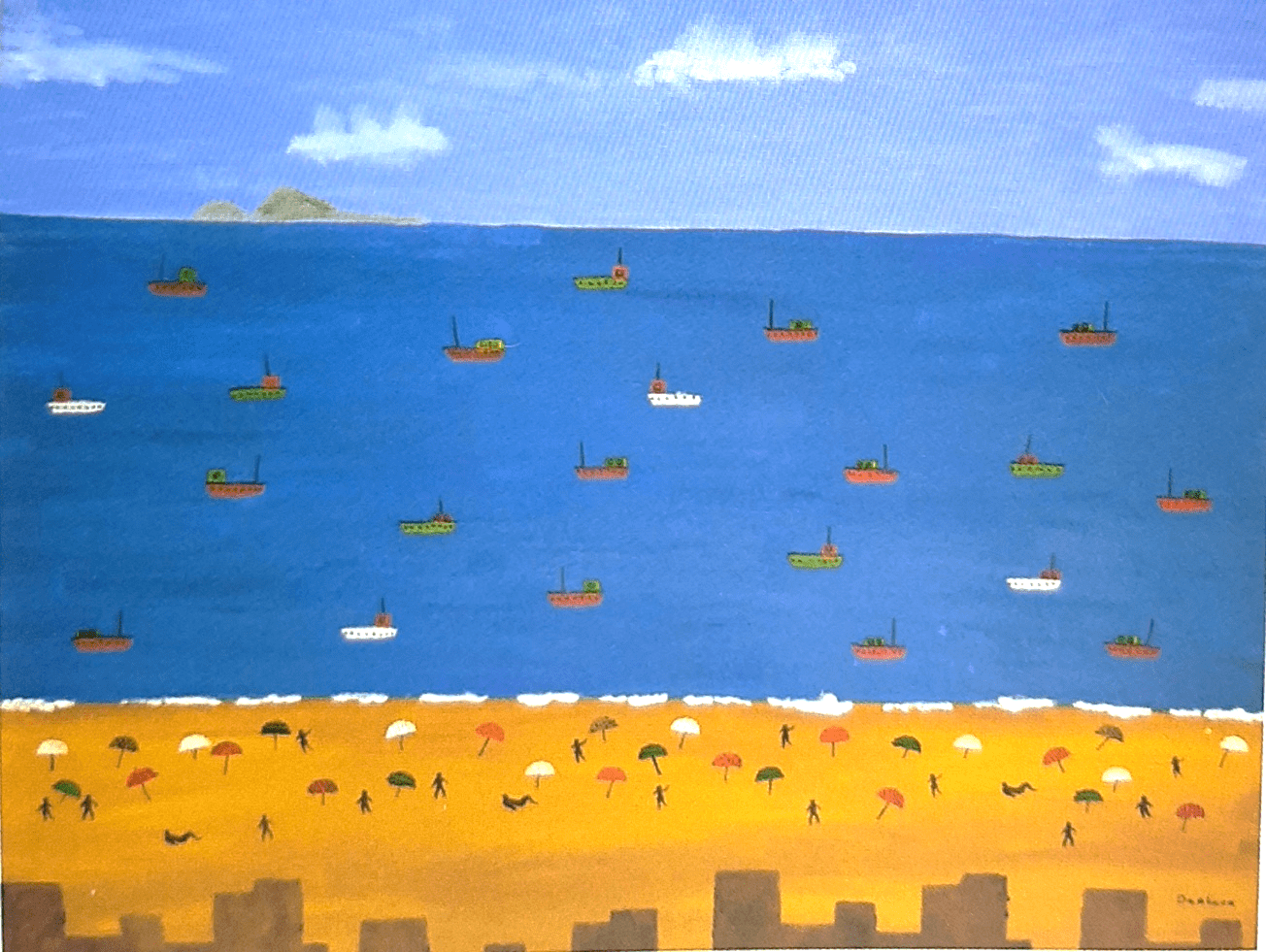
Analyzing figure 10, geographically, in the background is the Cabo Branco Lighthouse that stands on a cliff at Cabo Branco Beach, in João Pessoa, capital of Paraíba. There is also a band playing, a ciranda, people are dressed in colorful clothes, typical of the culture of the region. In the sea there is an ornate canoe. The color palette is saturated. The painting suggests a warm climate.
Figure 10: Atlantic Ocean bathing a Brazilian beach in the Northeast Region.
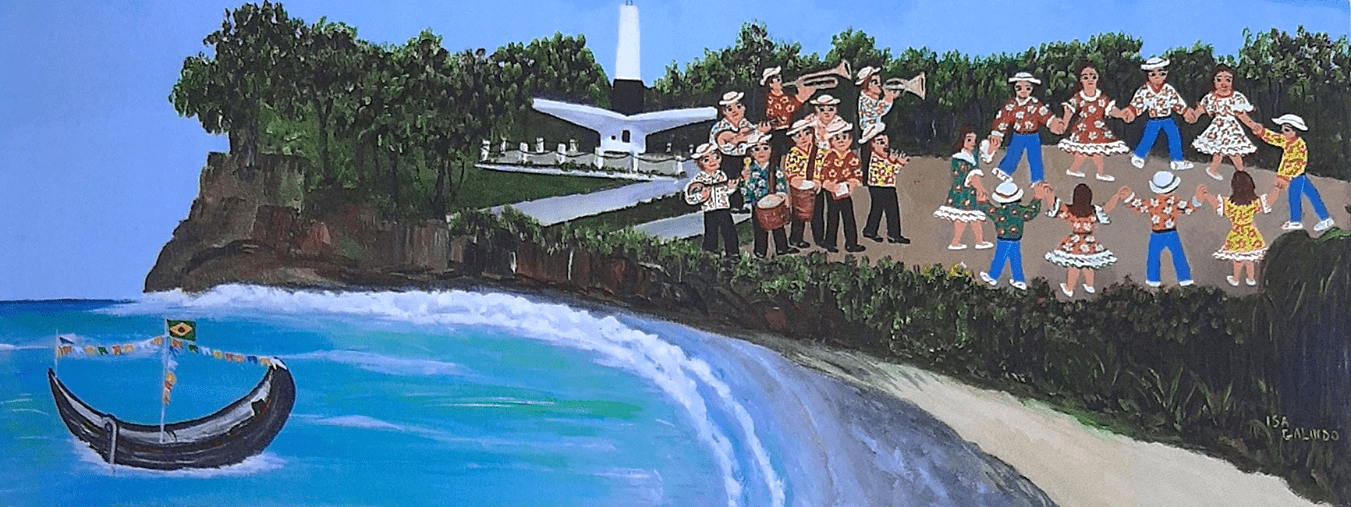
Analyzing Figure 11, a fictitious scenario is observed, with a lake or watercourse polluted by solid waste. This painting was chosen because it shows the degradation of the environment by improperly discarded objects. The painting is interesting because it serves as a warning to a real problem that occurs in Brazil.
Figure 11: Pollution of water resources.
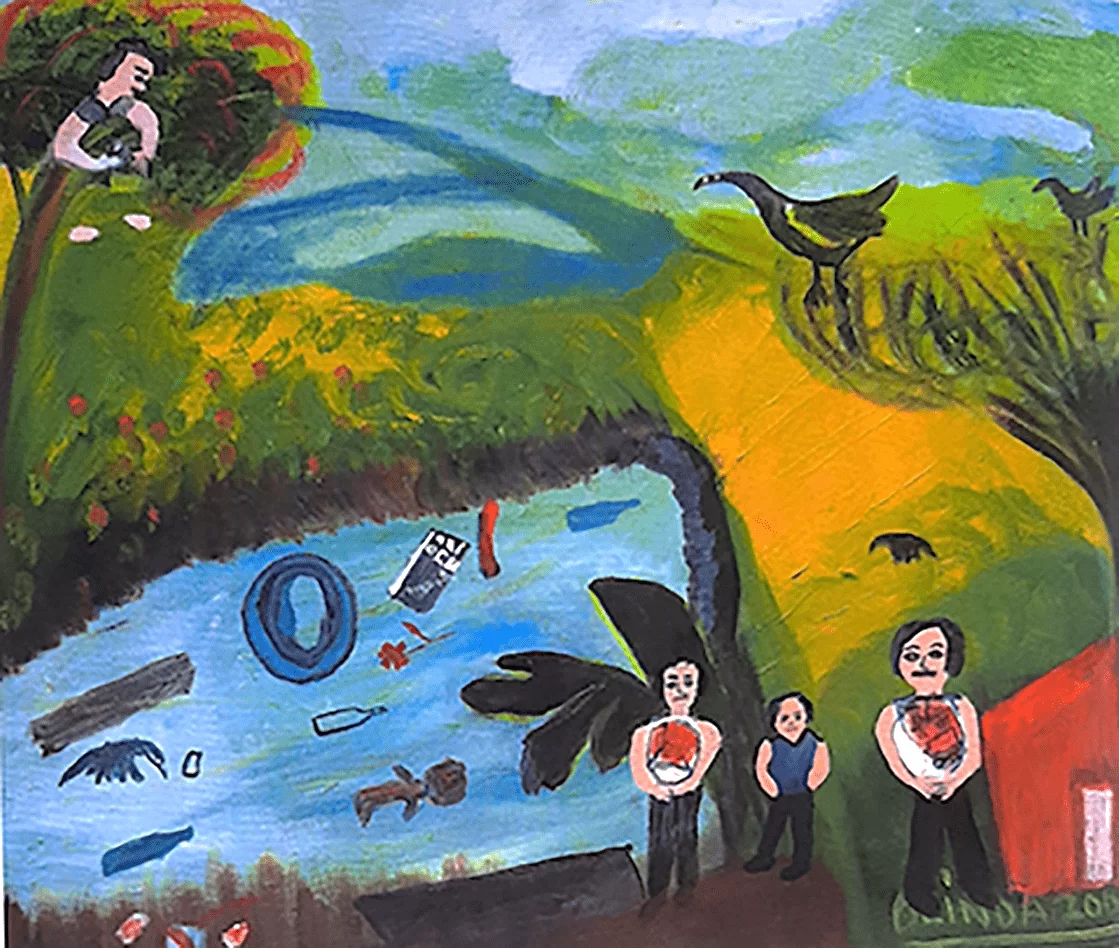
According to the Solid Waste Panorama 2018/2019, produced by the Brazilian Association of Public Cleaning Companies (ABRELPE), in 2018 Brazil generated 79 million tons of solid waste. Of this amount, about 40% of the collected waste received inadequate disposal. Thus, many improperly discarded solid waste end up polluting the environment, including water resources.
Analyzing Figure 12, a flooding scenario caused by heavy rains can be observed. Geographically, the location is Vila Pantanal, as the name of the S.U.S.[3] building suggests, in green. Houses are being flooded and the waters have already covered a car. Some people are being rescued by helicopter, others by boat. Meanwhile, animals and people take refuge on rooftops, awaiting rescue. But, there are still people inside the houses worried about the rising waters. The dark color of the waters can be related to the presence of effluents.
Figure 12: The flooding in Vila Pantanal.
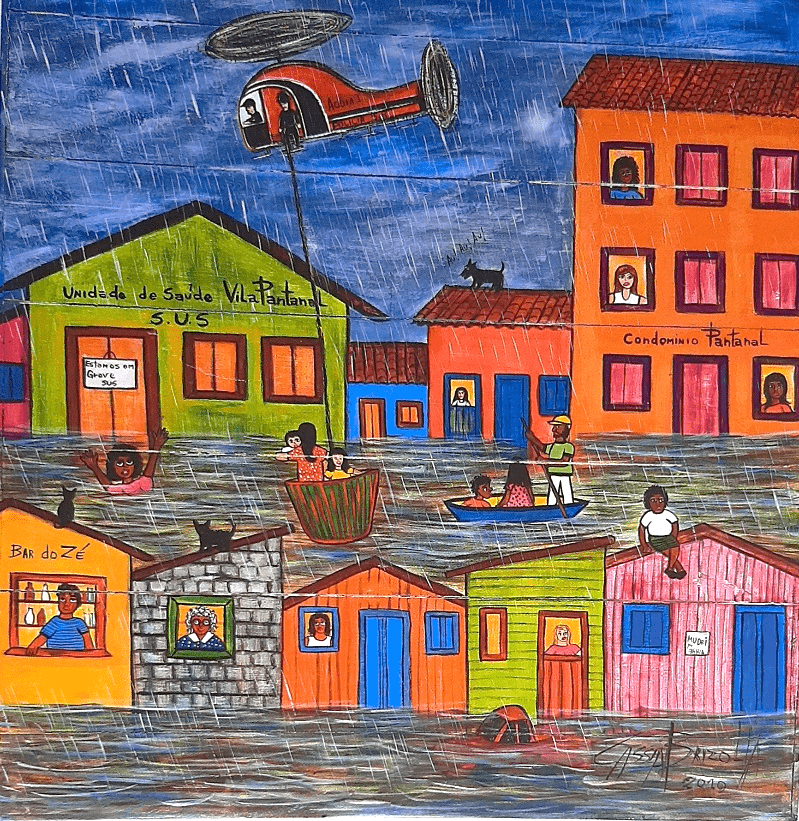
Floods are the “overflow of water from the normal channel of rivers, seas, lakes and weirs, or accumulation of water due to poor drainage, in areas not usually submerged” (ANA, 2013, p. 9). In the painting, Figure 12, the artist suggests that it is Vila Pantanal. In Curitiba, capital of the State of Paraná, there is a place called Vila Pantanal, where there are records of flooding. In Brazil, there are several places considered areas of risk of flooding.
Analyzing Figure 13, it is observed on a rainy day in a city, people using umbrellas while walking normally. In this painting, rain is welcome.
Figure 13: A typical rainy day in the city.
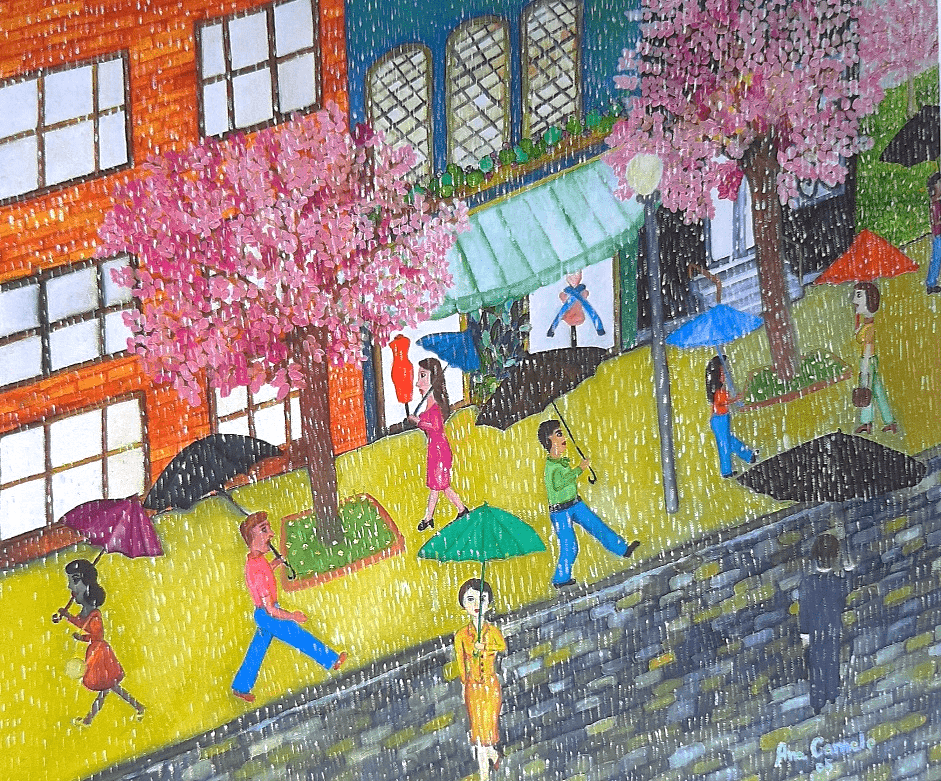
Figure 14 does not represent a real place, so it is not possible to locate it geographically. However, it was chosen because it shows multiple uses of water. You can see a river where there is a canoe and small boats, representing the use in navigation. In the same river, people fish for their own consumption, as an economic activity or even as a form of recreation. The fish also represent the river’s biodiversity. One can observe people in the waters, who may be swimming, playing or simply bathing. The water appears clean and suitable for human and animal consumption. There is a small pasture for cattle, agricultural plantations, breeding of various animals, but there is also vegetation close to the river. People work and play around the river. It is the water resources that make a beautiful and happy rural landscape possible.
Figure 14: Multiple uses of water.
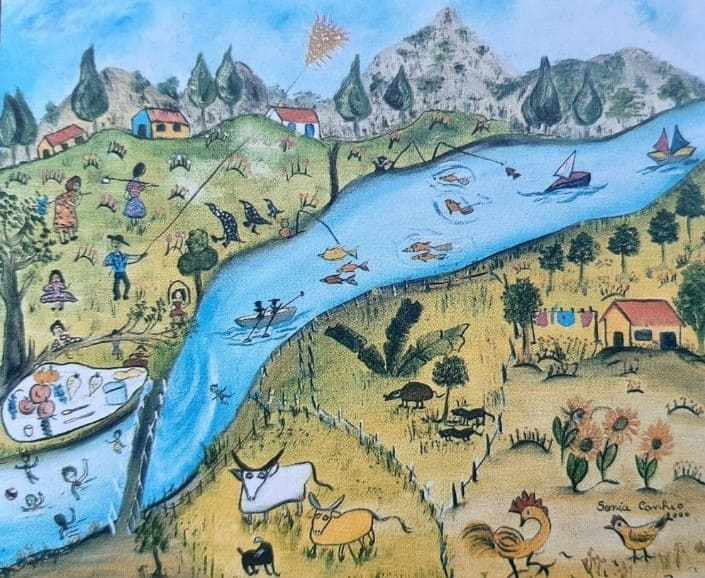
In the catalog of the Bienal Naifs do Brasil at SESC in Piracicaba/SP, held in 2012, each selected artist filled out a form with personal information and answered some questions. In this form there was also a space for the artist to make a drawing or write a message. Afterwards, these cards were part of the catalog of this edition of the Bienal, as a kind of presentation of each artist. One of these cards was that of Mr. Nivaldo Rosa, his drawing on the card is Figure 15. The artist gave the work the title “Thirst for Life”. Many things could be said about this painting for being so reflective and profound. But its essence translates like this: water is life.
Figure 15: Water is life.
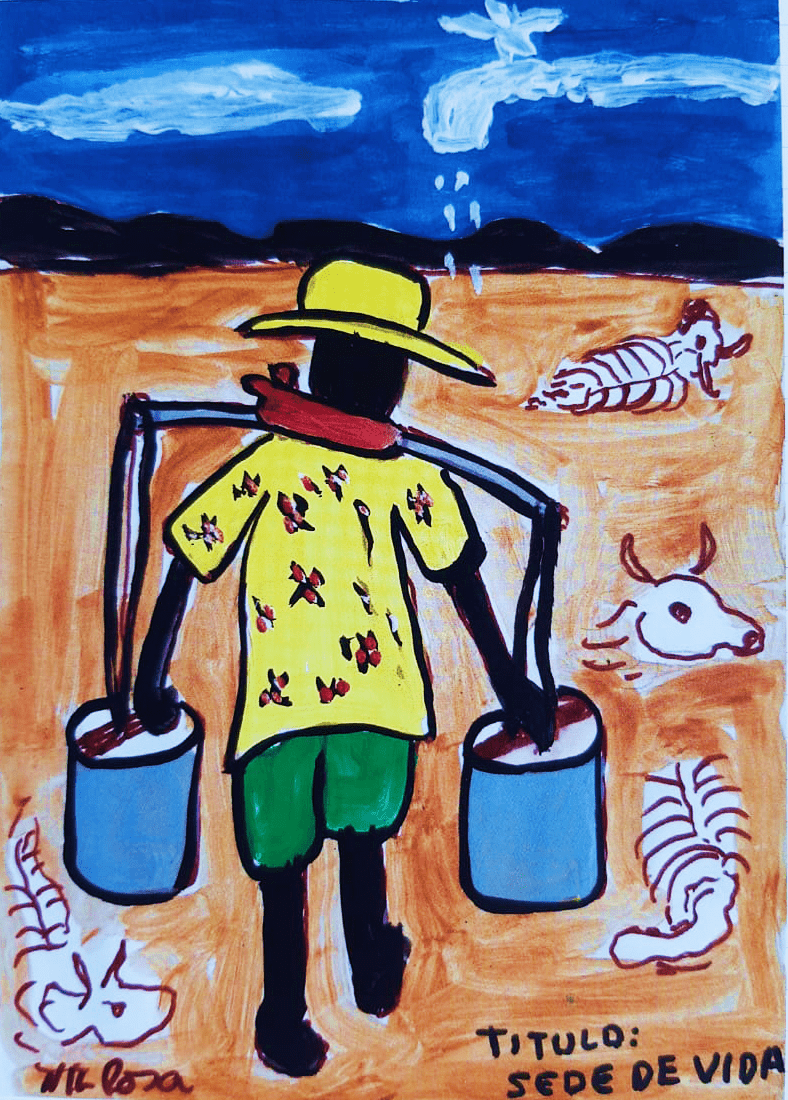
4. FINAL CONSIDERATIONS
This research analyzed 23 years of naive art in Brazil through catalogs of important exhibitions held in the country. Fifteen works were selected that show interesting aspects of Brazilian water resources. It is noteworthy that all the works analyzed have their own style, but this is one of the characteristics of naive art. Considering the multiple uses of water, the recurrent uses in the analyzed paintings are navigation, fishing and recreational activities. However, it is important to highlight that the set of works covered all regions of the country, covering the surface continental and oceanic waters that bathe the Brazilian coast. The set of works also addressed problems such as scarcity and pollution of water resources, in addition to showing how water is essential for the maintenance of life. This work combined arts and sciences. “Belonging to different fields, with peculiar characteristics that make them unique, Science (scientific field) and Art (artistic field) seek, respectively, explanations, representations and interpretations of reality” (FREITAS; GONÇALVES, 2018, p. 201) . In this way, it is concluded that water is an indispensable natural resource, valuing it through naive art also encourages its preservation and thus contributes to the management of water resources.
THANKS
The authors thank the Universidade do Estado do Amazonas (UEA), the Professional Master’s Degree in the National Network in Management and Regulation of Water Resources (PROFÁGUA), and the Geological Survey of Brazil (CPRM) for their support. He also thanks SESC Piracicaba for the production of BINAIF and the Olhos Naifs website for using the catalogs in this research. The authors thank everyone who is working to promote naive art, especially naive artists in Brazil.
REFERENCES
ABRELPE. Panorama dos Resíduos Sólidos 2018/2019. Disponível em: <http://abrelpe.org.br/download-panorama-2018-2019/> Acesso em: 20/05/2020.
AGÊNCIA NACIONAL DE ÁGUAS (ANA). Panorama da qualidade das águas superficiais do Brasil: 2012/Agência Nacional de Águas. Brasília: ANA, 2012. Disponível em: <http://arquivos.ana.gov.br/imprensa/publicacoes/Panorama_Qualidade_Aguas_Superficiais_BR_2012.pdf> Acesso em: 20/05/2020.
______. Manual de operação da Sala de Situação da ANA e para apoio aos Estados. Superintendência de Usos Múltiplos e Eventos Críticos. Brasília: ANA, 2013.
AMBIENTE BRASIL. Cachara. Disponível em: <https://ambientes.ambientebrasil.com.br/agua/pesca_esportiva_em_agua_doce/cachara_-_pseudoplatystoma_fasciatum.html> Acesso em: 20/05/2020.
ARDIES, Jacques; textos de Andrade, Geraldo Edson. Naive Art in Brazil. 1 ed. São Paulo: Empresa da Artes, 1998.
BINAIF. Catálogo da Bienal Internacional de Arte Naif Totem Cor-Ação. Socorro: ITC Instituto Totem Cultural, 2017 a 2019.
BRASIL. Lei nº 9.433, de 8 de janeiro de 1997. Institui a Política Nacional de Recursos Hídricos, cria o Sistema Nacional de Gerenciamento de Recursos Hídricos. Brasília, DF, janeiro de 1997. Disponível em: <http://www.planalto.gov.br/ccivil_03/LEIS/L9433.htm> Acesso em 20/05/2020.
______, Ministério do Meio Ambiente (MMA). Disponível: <https://www.mma.gov.br/biomas/pantanal> Acesso em: 20/05/2020.
D’AMBROSIO, O. A. F. Um Mergulho no Brasil Naif: A Bienal Naifs do Brasil do SESC Piracicaba 1992 a 2010. 202 f. Tese de Doutorado em Educação, Arte e História da cultura. Universidade Presbiteriana Mackenzie, São Paulo, 2013. Disponível: <http://tede.mackenzie.br/jspui/handle/tede/2068> Acesso em: 20/05/2020.
ENCICLOPÉDIA, Itaú Cultural de Arte e Cultura Brasileiras. São Paulo: Itaú Cultural, 2020. Disponível em: <http://enciclopedia.itaucultural.org.br/termo5357/arte-naif>. Acesso em: 20/05/2020.
FINKELSTEIN, L. Brasil Naif. Arte Naif: Testemunho e patrimônio da humanidade. 1 ed. Rio de Janeiro: Novas Direções, 2001.
FREITAS, N. M. S.; GONÇALVES, T. V. O. Práticas teatrais e o ensino de Ciências: o teatro jornal da abordagem da temática do lixo. Educar em Revista, Curitiba, Brasil, v. 34, n. 68, p. 199-216, mar./abr. 2018. Disponível:<https://www.scielo.br/pdf/er/v34n68/0104-4060-er-34-68-199.pdf> Acesso em: 20/05/2020.
FRANZINELLI, E. Revista Brasileira de Geociências. 41(4): 587-596, dez. 2011. Disponível: <http://www.ppegeo.igc.usp.br/index.php/rbg/article/view/7855/7282> Acesso em: 20/05/2020.
FUNDAÇÃO, SOS Mata Atlântica; INPE, Instituto Nacional de Pesquisas Espaciais. Atlas dos remanescentes florestais da Mata Atlântica. Mapeamento dos sistemas costeiros. São Paulo: 2018. Disponível:<http://mapas.sosma.org.br/site_media/download/SOSMA_Atlas-da-Costa_Final.pdf> Acesso em: 20/05/2020.
ITAIPU, Binacional. Rio Paraná. Disponível: <https://www.itaipu.gov.br/energia/rio-parana> Acesso em: 20/05/2020.
MARENGO, J. A.; CUNHA, A. P.; ALVES, L. M. 2016. A seca de 2012-15 no semiárido do Nordeste do Brasil no contexto histórico. Climanálise, 3, (1), 1-6. Disponível em: <http://climanalise.cptec.inpe.br/~rclimanl/revista/pdf/30anos/marengoetal.pdf> Acesso em: 20/05/2020.
O ECO. O dilema de conviver com sucuris. Disponível em: <https://www.oeco.org.br/reportagens/o-dilema-de-conviver-com-sucuris/> Acesso em: 20/05/2020.
OLHOS NAIFS. Catálogo Virtual da Mostra Nacional de Arte Naif no Estado de São Paulo. Disponível em: <https://enzoferrara75.wixsite.com/olhosnaifs/encontro-nacional-de-arte-naif-2019> Acesso em: 20/05/2020.
SESC. Catálogo da Bienal Naifs do Brasil. Piracicaba: SESC, de 1996 a 2018.
SIGRH (ESTADO DE SÃO PAULO). Rio do Peixe. Disponível em: <www.sigrh.sp.gov. br/cbhap/apresentacao> Acesso em: 20/05/2020.
TUNDISI, J. G. Recursos hídricos no Brasil: problemas, desafios e estratégias para o futuro. 76 p. Rio de Janeiro: Academia Brasileira de Ciências, 2014. Disponível em <https://www.researchgate.net/publication/299397625_RECURSOS_HIDRICOS_NO_BRASIL_problemas_desafios_e_estrategias_para_o_futuro> Acesso em: 20/05/2020.
APPENDIX – FOOTNOTE
3. The Unified Health System in Brazil.
[1] Master’s student in Management and Regulation of Water Resources at the Universidade do Estado do Amazonas (UEA); Postgraduate in Administration, Corporate Finance and Business from Escola Superior Aberta do Brasil (ESAB); Postgraduate in Art and History Teaching at Faculdade Cidade Verde; Graduated in Degree in Visual Arts from the Federal University of Amazonas (UFAM); Bachelor in Accounting Sciences from the University Center for Higher Education of Amazonas (CIESA).
[2] Post-Doctorate at the Federal University of Goiás (UFG); PhD in Geography from the Universidade Estadual Paulista Júlio de Mesquita Filho (UNESP); Degree in Geography from the Federal University of Santa Maria (UFSM).
Sent: June, 2020.
Approved: June, 2020.
